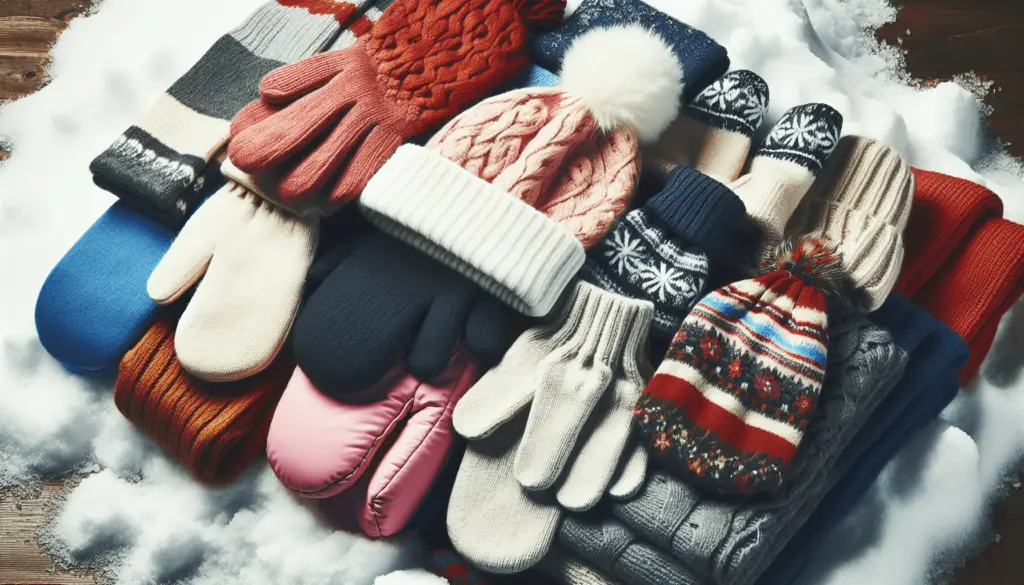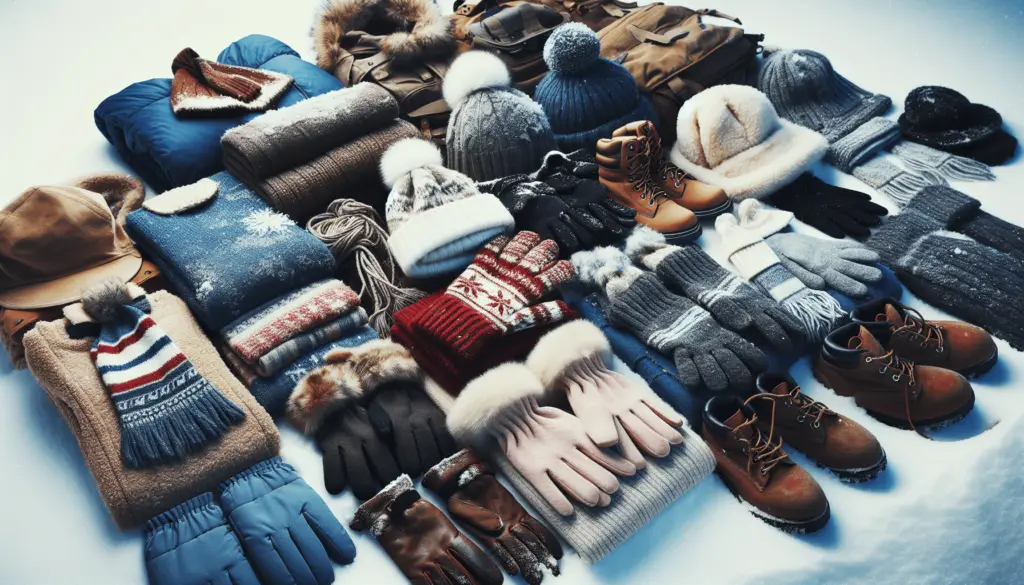Welcome to “Tips For Prepping In Cold Climates”! In this article, you will learn essential tips and tricks for efficiently prepping in cold weather conditions. From proper layering techniques to staying hydrated, we’ve got you covered. So grab a warm cup of tea, sit back, and prepare to conquer the chill with confidence. Have you ever wondered how to properly prep for emergencies in cold climates? Whether you live in a region with harsh winter conditions or enjoy outdoor activities in the snow, being prepared for any situation is essential. Here are some valuable tips to help you navigate and thrive in cold climates.
Understanding the Challenges of Cold Climates
Before diving into the tips for prepping in cold climates, it’s crucial to understand the unique challenges that come with frigid temperatures. Cold weather can pose serious risks to your health and safety, such as hypothermia, frostbite, and icy conditions. By being aware of these challenges, you can better prepare yourself for any situation that may arise.
Cold weather can affect your body in various ways, from reducing your dexterity to lowering your energy levels. It’s essential to dress appropriately, stay hydrated, and stay dry to avoid these issues. Additionally, cold climates can have limited access to resources and services, making it crucial to have a well-thought-out plan in place.

Dressing for Success: Layering Techniques
One of the most important aspects of prepping for cold climates is dressing appropriately. Layering is key to staying warm and comfortable in frigid temperatures. When layering your clothing, it’s essential to have a combination of insulating, moisture-wicking, and waterproof layers to protect yourself from the elements.
Start with a moisture-wicking base layer to keep sweat away from your skin and regulate your body temperature. Next, add an insulating layer to trap heat and keep you warm. Finally, top it off with a waterproof and windproof outer layer to protect you from snow, rain, and wind.
Remember to adjust your layers based on your level of activity and the temperature. You may need to remove or add layers to prevent overheating or getting too cold. Investing in high-quality thermal clothing and outerwear will ensure that you stay warm and dry in cold climates.
Footwear: Keeping Your Feet Warm and Dry
In cold climates, your choice of footwear can make a significant difference in your comfort and safety. Cold feet can lead to discomfort, frostbite, and even hypothermia, so it’s essential to invest in proper footwear for the conditions. Look for insulated, waterproof boots with good traction to keep your feet warm and dry.
Choose boots that are rated for cold temperatures and have features like insulation, moisture-wicking liners, and waterproof materials. Properly fitted boots with room for thick socks are essential to maximize warmth and prevent blisters. Consider using toe warmers or insulated insoles for extra warmth in extremely cold conditions.
Hydration and Nutrition: Fueling Your Body
Staying hydrated and well-nourished is crucial in cold climates, as your body requires more energy to stay warm. Dehydration can impair your body’s ability to regulate temperature and increase your risk of hypothermia. Make sure to drink plenty of water throughout the day, even if you don’t feel thirsty.
Pack high-energy and high-calorie foods that are easy to prepare and store, such as energy bars, trail mix, and dehydrated meals. These foods can provide essential nutrients and keep your energy levels up in cold conditions. Consider adding warm beverages like tea, coffee, or hot cocoa to your prepping supplies for a comforting and warming treat.
Shelter: Building a Safe Haven
In cold climates, having a reliable shelter is essential for protecting yourself from the elements and staying warm. Whether you’re facing a sudden storm or stranded in the wilderness, having the right shelter can make all the difference in your survival. Consider different shelter options based on your location and situation.
If you’re at home during a power outage or severe weather event, make sure to have alternative heating sources like a fireplace, wood stove, or portable heater. Stock up on blankets, sleeping bags, and warm clothing to stay warm indoors. In outdoor situations, consider carrying a lightweight tent or emergency shelter to protect yourself from wind, snow, and rain.

Fire Starting: Essential Survival Skill
Fire starting is a crucial survival skill in cold climates, as it can provide warmth, light, and a way to cook food. Whether you’re in a wilderness setting or facing a power outage, having the ability to start a fire can be a lifesaver. Pack a reliable fire starter kit in your emergency supplies and practice building fires in different conditions.
Waterproof matches, lighters, and fire starters like cotton balls soaked in petroleum jelly are excellent options for igniting a fire in wet or snowy conditions. Consider carrying a small stove or portable campfire for cooking and boiling water. Make sure to follow fire safety protocols and check for any fire restrictions in your area before starting a fire.
Navigation and Communication: Finding Your Way
Navigating in cold climates can be challenging, especially in snowy or icy conditions. Having the right tools and knowledge for navigation can help you find your way back to safety and communicate with others. Make sure to pack a map and compass in your emergency kit and practice using them before heading out.
Consider using GPS devices or satellite communicators for real-time tracking and communication in remote areas. Keep your phone and other electronic devices protected from cold temperatures, as extreme cold can drain battery life quickly. Having a backup power source like a portable charger or solar panel can ensure that you stay connected in cold climates.
First Aid: Treating Cold-Related Injuries
Cold weather injuries like frostbite and hypothermia are serious conditions that require immediate treatment. Knowing how to recognize and treat these cold-related injuries can prevent further complications and save lives. Pack a comprehensive first aid kit in your emergency supplies and familiarize yourself with cold weather injury protocols.
For frostbite, gently warm the affected area with warm water or body heat and avoid rubbing or massaging the skin. Seek medical attention if the skin turns white or numb. For hypothermia, get the person to a warm shelter, remove wet clothing, and wrap them in blankets or sleeping bags. Provide warm liquids and monitor their condition closely.
Mental Preparedness: Staying Calm and Positive
In cold climates, mental preparedness is just as important as physical preparedness. Maintaining a calm and positive mindset can help you make rational decisions, stay focused, and overcome challenges. Practice stress-relief techniques like deep breathing, meditation, or visualization to stay grounded in stressful situations.
Stay connected with friends, family, or a support network to share your experiences and seek help if needed. Keeping a positive attitude and a sense of humor can boost morale and motivate you to keep going in cold climates. Remember that mental resilience is a valuable skill that can help you adapt and survive in any situation.
Training and Practice: Building Resilience
Prepping for cold climates requires practice, preparation, and ongoing training to build resilience and confidence. Take the time to review your emergency plans, update your supplies, and practice your skills regularly. Consider taking courses in cold weather survival, first aid, and outdoor skills to enhance your knowledge and expertise.
Practice building shelters, starting fires, navigating with a compass, and treating cold-related injuries in a controlled environment before encountering a real emergency. Join local prepping or survival groups to exchange knowledge, share experiences, and learn from others. By honing your skills and staying prepared, you can navigate cold climates with confidence and resilience.
In conclusion, prepping in cold climates requires careful planning, preparation, and awareness of the unique challenges that come with frigid temperatures. By following these tips and having the right mindset, you can stay safe, warm, and ready for any situation that may arise in cold climates. Stay informed, stay prepared, and stay safe in cold climates.
